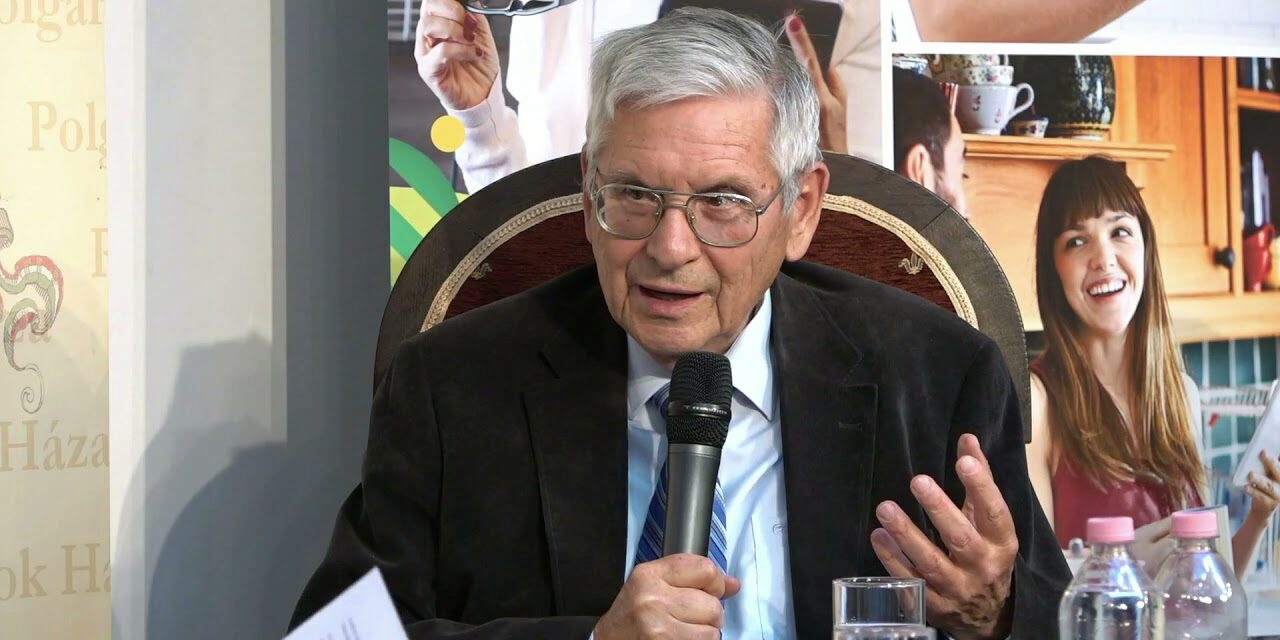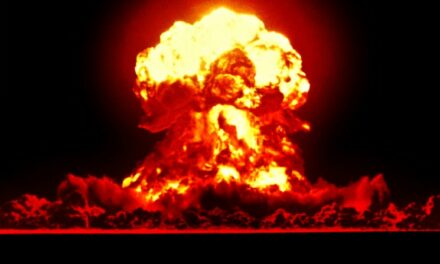On October 27, The Guardian published a lengthy article that proclaimed a state of emergency even in its title: The world is close to an "irreversible" climate collapse, and then cites studies from prestigious institutions and tries to scare the readers as much as possible. In the past month, three key UN agencies have produced damning reports on the outcome of the climate battle. According to a report by the UN's environmental protection agency, there is no credible path to reaching 1.5 degrees Celsius, and the woefully insufficient results achieved in reducing carbon dioxide emissions mean that the worst effects of the climate crisis can only be limited by rapidly transforming societies.
According to the UN's climate change agency, the current 2030 commitments, even if fully met, would mean a rise in global warming of 2.5 degrees Celsius, which would doom the world to a catastrophic climate collapse.
In 2021, all major greenhouse gases set records, and emissions of methane, a potent greenhouse gas, jumped alarmingly, according to a report by the United Nations Meteorological Agency.
Rockström, director of Germany's Potsdam Institute for Climate Impact Research, said: "It's a really dark moment, not only because emissions are still reported to be increasing, so we're not meeting the Paris or Glasgow climate change agreements, but we have so much scientific evidence there is also the fact that we are very, very close to irreversible changes - we are getting closer and closer to the turning points."
On the other hand, Climate Intelligence (CLINTEL), an independent foundation active in the field of climate change and climate policy, with the support of about 1,400 scientists, writes that there is no climate emergency, warming is much slower than the Intergovernmental Panel on Climate Change (IPCC) models show predicted by taking into account the anthropogenic (man-made) effects. The gap between the real world and the modeled world shows how far we are from understanding climate change.
Warming is caused by both natural and anthropogenic factors. The geological archive reveals that Earth's climate has been changing since the planet's existence, with natural cold and warm phases. The Little Ice Age did not end until 1850. Therefore, it is not surprising that we are now living in a period of warming.
Climate models have many shortcomings and are far from credible as policy tools. Not only do they exaggerate the effect of greenhouse gases, they also ignore the fact that enriching the atmosphere with carbon dioxide is beneficial. Carbon dioxide is not a pollutant. It is vital for life on earth. More carbon dioxide is good for nature, it makes our planet greener. Excess carbon dioxide in the air helps increase global plant biomass. It is also profitable for agriculture as it increases crop yields worldwide.
So we see two contradictory opinions, each supported by serious scientists, how can a decision-making politician who knows nothing about the topic or a citizen who supports politicians with their votes decide who is right?
Before moving on to the controversial role of carbon dioxide present in the atmosphere, we would like to point out that the highly respected UN and intergovernmental institutions have set goals that are impossible to achieve in the first place, and this makes their claims completely discredited from a scientific point of view. There is a multiple, sometimes tenfold or even greater difference between the energy consumption of developed and underdeveloped countries. A higher level of economic development legally requires more energy, so the energy demand of countries that are catching up will continue to increase significantly. And their growing energy needs cannot necessarily be met with anything other than fossil energy, i.e. with coal, oil or natural gas, as a result of which carbon dioxide emissions will also increase. What climate protectionists recommend to meet energy needs with wind or solar energy only proves that they have no idea about the basic requirements of energy supply, for example, that energy is needed even when the sun is not shining. And taking all of this into consideration, climate activists, no matter how high they are in office, cannot be seen as anything other than a political movement, just like gender activists or the BLM movement.
A good example of this is that Angela Merkel, who is a physicist by education, so she had to be aware of the basic issues of energy supply, stopped the German nuclear power plants because after the Fukushima nuclear accident (as we know, it was caused by the tsunami) the German Greens - with strong media support - massive demonstrations were organized to shut down nuclear power plants. But the biggest problem was not with the demonstrations, but with the fact that the Greens performed well in a provincial election, and Angela Merkel wanted to take the wind out of the Greens' sails for the sake of party politics. The Greens, which in the meantime became the government coalition party, even now, when the Germans have to face frostbite, are forcing the closure of nuclear power plants simply because this has always been their political goal.
What has been said is perhaps quite convincing that the debate is fundamentally political, and that climate policy in its current form began with Al Gore's election program when he ran for the presidency of the United States. But after that, let's look at what we know about real climate change and the role of carbon dioxide in it. It is undeniable and no one disputes that the Earth's average temperature has increased in the past century and a half, nor that the carbon dioxide content of the air is increasing, nor that carbon dioxide is a greenhouse gas. What is controversial is the role of (anthropogenic) carbon dioxide in the air due to human activity in the current warming of the Earth.
Throughout Earth's history, there have been alternating ice ages and ice-free periods, and no one knows why. We have been living in an ice age for 30 million years now, because a significant part of the Earth (the North and South Poles) is covered by ice all year round. However, during this ice age there were colder and warmer periods, glacials and interglacials. Everyone could have learned or heard about the last glaciation, the Würm, galcial, which we usually just call the ice age, and the mammoth that died out ten thousand years ago comes to mind most of all. The last two and a half million years were characterized by an almost regular alternation of glacials and interglacials, which is explained by a theory, the Milankovics theory, with changes in the Earth's orbital elements and thus with changes in the strength of solar radiation reaching the Earth. But if we don't go that far, we can also use the name Greenland as an example, which means green land, so when the Vikings visited there a thousand years ago, they saw green fields in the place of today's glaciers. And all of these changes occurred before humans burned coal or other fossil fuels.
It also follows from all this that climate change cannot be explained simply by changes in the carbon dioxide content of the air, the Earth's atmosphere undoubtedly has a greenhouse effect, without it the Earth would be 33 degrees Celsius colder, but water vapor plays a decisive role in this greenhouse effect, carbon -dioxide's contribution is small due to its low concentration and limited absorption spectra.
Despite what has been said, I am not against it, in fact, I support reducing man's ecological footprint, since the environmental damage of human activity is very well observable, and I could even accept the goal of realistically reducing carbon dioxide emissions if this it would not be based on party programs, but on calculations and action programs based on reality.
Author: Károly Lóránt, economist, advisor to the National Forum
Source: Magyar Hírlap
Photo: 2022plus












